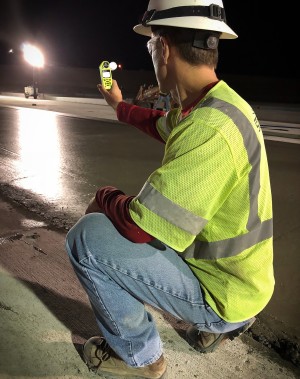
Panel of industry experts look at alternative curing techniques.
At the 2020 Quality in Concrete Slabs Luncheon and Forum during the World of Concrete, four industry experts discussed curing of slabs from industrial to decorative.
Dave Hoyt with Curecrete and chair of ACI Committee 310/308-TG2 Curing Decorative Concrete Joint Task Group, led off by describing recent research to evaluate the best methods for curing three different types of slabs: one suitable for polishing, one with a stamped surface, and one with exposed aggregate. The research, conducted at California State University, Chico, looked at abrasion resistance and water absorption for surfaces cured with various techniques like silicates and wet curing blankets. The results, unfortunately, were inconclusive so the committee is looking ahead to further investigations.
“The objective of curing is to develop a quality paste at the surface of a slab,” said Clark Branum with Diamatic USA and the current chair of ACI-ASCC Committee 310, Decorative Concrete. But the industry needs to look at this closely and try to develop some alternative curing methods that are effective but have fewer negative impacts on the finished surface, especially for decorative slabs or slabs intended to be polished.
Bob Harris, Structural Services Inc. and a decorative c expert, said curing is our Achilles heel since often it’s the lowest paid worker doing this last step. “Improperly spray-applied cures can dramatically effect a finished polished floor,” he said, “creating differential curing that result in streaks even when polished.” He showed slabs that had to be ground down deep enough for aggregate exposure to get a consistent appearance. Harris encouraged anyone using wet curing techniques to scrub the surface to remove any efflorescence as soon as possible after removing the curing blankets—at least within 2 or 3 hours—to avoid surface imperfections.
Scott Tarr, North S.Tarr Concrete Consulting, discussed the basics of curing and the use of what he calls passive curing. “Anytime the relative humidity is over 80%, it’s humid enough that active curing isn’t necessary.” But he cautioned that if the humidity drops suddenly, then you’re in danger of drying out the surface, even with a hard troweled finish.
The luncheon was presented by Concrete Construction and the American Society of Concrete Contractors. Thanks to the sponsors Multiquip, Somero Enterprises, and Stego Industries. Next year’s luncheon will take place on January 20, 2021.
Click here to read original article
Posted on:February 13, 2020

